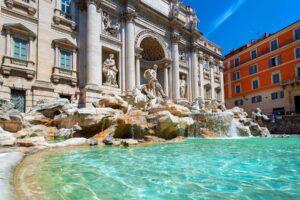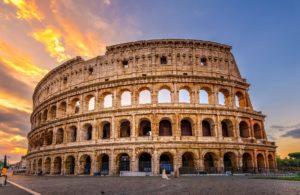Fodor's Expert Review Santa Maria della Pace
In 1656, Pietro da Cortona (1596–1669) was commissioned by Pope Alexander VII to enlarge the tiny Piazza della Pace in front of the 15th-century church of Santa Maria so that it could accommodate the carriages of its wealthy parishioners. His architectural solution was to design a new church facade complete with semicircular portico, demolish a few buildings here and there to create a more spacious approach, add arches to give architectural unity to the piazza, and then complete it with a series of bijou-size palaces. The result was one of Rome's most delightful little architectural set pieces.
Within are several great Renaissance treasures. Raphael's fresco above the first altar on your right depicts the Four Sibyls—almost exact replicas of Michelangelo's, if more relaxed. The fine decorations of the Cesi Chapel, second on the right, were designed in the mid-16th century by Sangallo. Opposite is Peruzzi's wonderful fresco of the Madonna and Child. The octagon... READ MORE
In 1656, Pietro da Cortona (1596–1669) was commissioned by Pope Alexander VII to enlarge the tiny Piazza della Pace in front of the 15th-century church of Santa Maria so that it could accommodate the carriages of its wealthy parishioners. His architectural solution was to design a new church facade complete with semicircular portico, demolish a few buildings here and there to create a more spacious approach, add arches to give architectural unity to the piazza, and then complete it with a series of bijou-size palaces. The result was one of Rome's most delightful little architectural set pieces.
Within are several great Renaissance treasures. Raphael's fresco above the first altar on your right depicts the Four Sibyls—almost exact replicas of Michelangelo's, if more relaxed. The fine decorations of the Cesi Chapel, second on the right, were designed in the mid-16th century by Sangallo. Opposite is Peruzzi's wonderful fresco of the Madonna and Child. The octagon below the dome is something of an art gallery in itself, with works by Cavalliere Arpino, Orazio Gentileschi, and others; Cozzo's Eternity fills the lantern above.
Behind the church is its cloister, designed by Bramante (architect of St. Peter's) as the very first expression of High Renaissance style in Rome. In addition to an exhibit space for contemporary art, the cloister has a lovely coffee bar.
READ LESS








